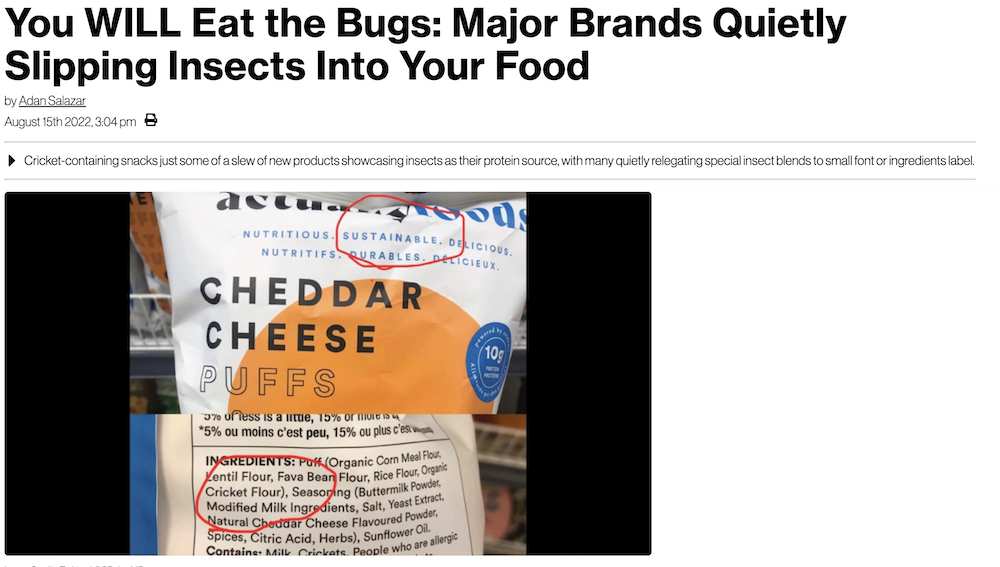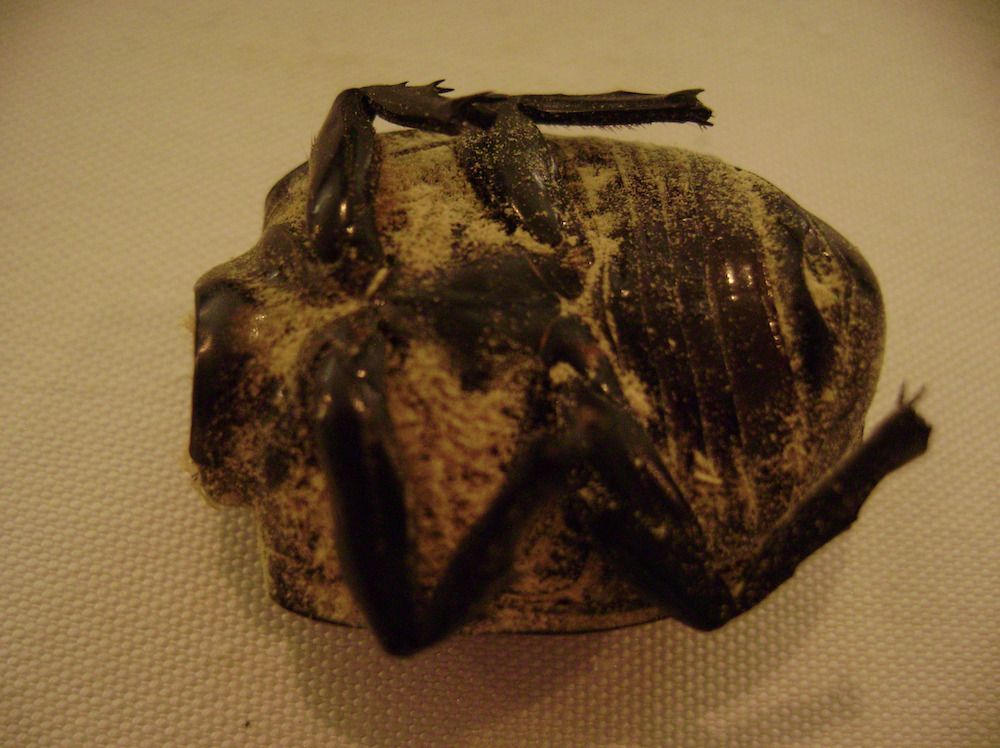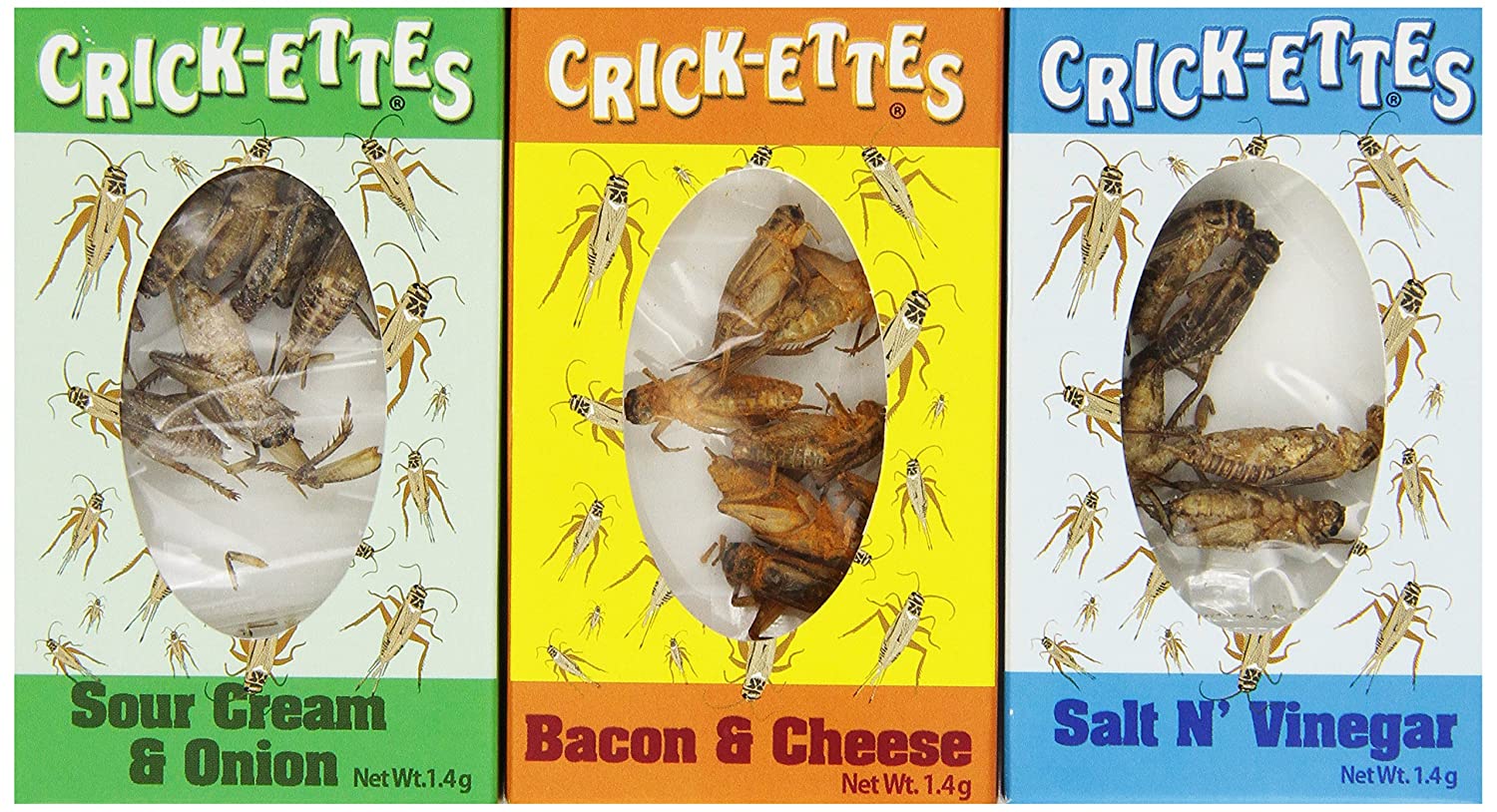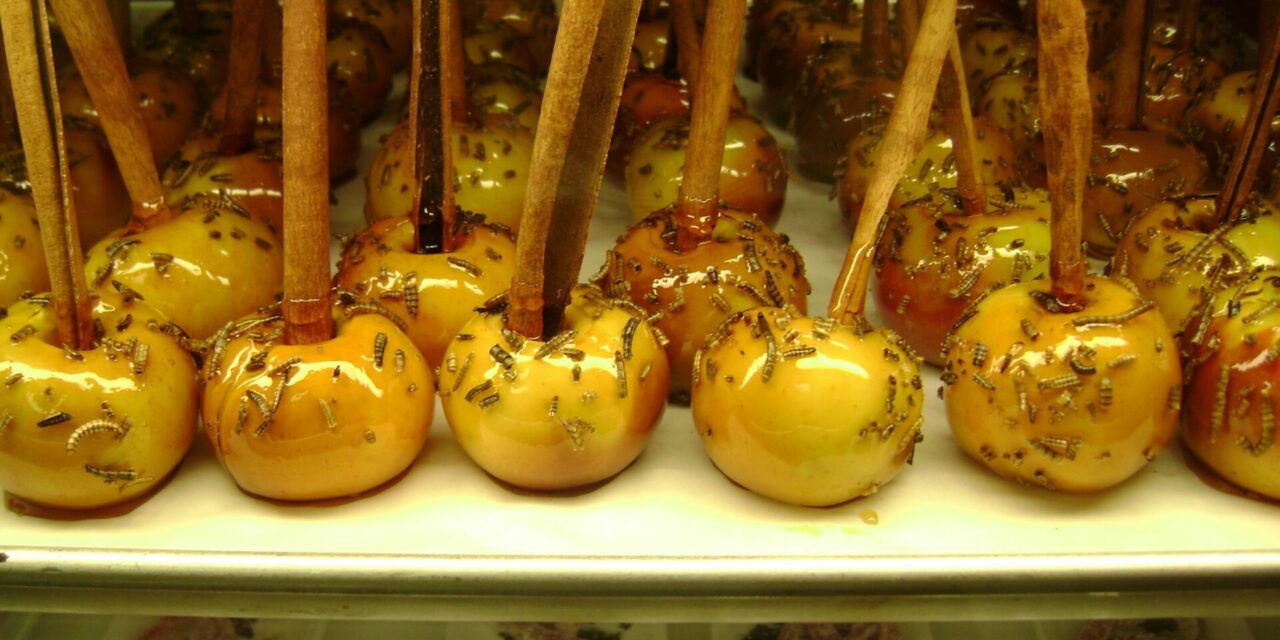Challop (noun) – plural : challops
Pronounced “chah-lop’
1: Abbreviation for challenging opinion.
2: An irregularly published column on website Good Food Revolution.
Ahhhh… upon the topic of entomophagy (AKA eating insects): where to begin?
Personally, I have been enthusiastically eating insects for well over a decade, and I’ve never had any issues about doing so after I got over what is known colloquially as the initial “ick factor”. Our eight-year old doesn’t as much as blink given the suggestion of bacon and cheese flavoured crickets as a little snack, and finds the whole concept absolutely fascinating.
It’s a tiresomely common trope of prolific conspiracy-theory grifters Alex Jones, Paul Joseph Watson et al. that part of the “New World Order’s” plan as part of “The Great Reset Agenda” is to prevent us “normal folks” from eating meat and have us all eating insects instead.
Although one is always advised not to read the comments on such sites, invariably I do:
“Eggs and bacon every morning and steak several times a week. Bugs are for suckers.”
Further research reveals that gratuitous meat consumption (or posting comments about such behaviour on comments and/or social media) has become the equivalent of the anti-environmentalist’s wholly idiotic “Rollin’ Coal“.
Don’t get me wrong here, I enjoy cooking and eating meat a great deal, but I’m also very much aware of the wider environmental impacts of my gastronomic choices, and am constantly taking small steps to adjust said choices.
Which brings us to the bugs…

Yip, this is the kind of crap espoused by conspiracy theory sites the world over. Their claims are completely bogus, seeing as the blue circle on the front of the bag (partially obscured here, purposely) states clearly that the contents are “powered by crickets”. Strangely enough the product featured, a cricket-powered puffed Cheeto/Wotsit, is a Canadian one, and happens to be one of our family’s favourites.
The (WHO) World Health Organisation has predicted that the human demand for food will more than double over the next four decades, but as the planet’s population rapidly grows, and the impacts of global climate change and unsustainable farming practices (traditional livestock farming produces more greenhouse gas emissions than cars do) hit harder each year, there are fewer and fewer spaces where food can actually be grown.
According to the WHO reports, the most challenging aspect of food production will be meeting the demands for meat of our expanding populace. Although the consumption of meat is popular in the west, it is now gaining some serious traction amongst the emerging and expanding wealthy classes in China and India.
As almost 70% of the world’s agricultural land is already being used for livestock, rising demand will undoubtedly drive prices up, with a suggestion that come, say, 2050, meat may well be well out of the price-range of all but the very top-earners, the 0.1% or something, making it ostensibly the “new caviar”.
One suggestion as a solution to this imminent problem would be lab-grown meat, something I have covered previously, but such production is still prohibitively expensive, hugely so, and so for now it’s still really the stuff of science fiction.

A Ginger-dusted Rhinoceros Beetle at the Charlie’s Burgers Bug Dinner with chefs Matt Binkley and Jeff Stewart way back in January of 2010, Toronto.
Now, back to insects…
Bugs, from grubs to grasshoppers, have been a staple part of cuisines around the world for centuries, particularly in regions of Asia, Africa, and South America; in North America and Europe, not so much as they are certainly not part of the everyday consumer’s shopping habits, but attitudes are slowly changing as many conscientious shoppers look for more environmentally friendly (not to mention cheaper) sources of protein.
A January 2021 study in Critical Reviews in Food Science Nutrition noted that edible insects possess “high superior health benefits” due to high levels of vitamin B12 (more than 4x than that of beef), iron, zinc, fibre (in the form of chitin and prebiotic oligosaccharides), essential amino acids (all 9 of them), omega-3 and omega-6 fatty acids (a highly desirable 3:1 ratio of omega 6 to omega 3 fatty acids), and antioxidants. The study also pointed to crickets as an excellent source of protein (twice as much protein as beef!) through their muscle-bound hind legs used for jumping.
Another less talked about aspect of farming insects is the fact that crickets and many other bugs can be raised vertically, meaning that they can be raised in myriad layers in climate-controlled facilities, offering the possibility of operating year-round and leaving far less of an environmental footprint compared to that of a contemporary livestock farm.

Don’t knock them until you have tried them. Crick-ettes in a variety of flavours, found in more grocery store aisles than one would imagine. Just don’t buy them from Loblaws as we are currently boycotting them for price-gouging.
When it comes to seizing the day when it comes to the potential farming of this near-future crop, Canada has been pretty quick off the starting blocks.
In 2014, some 30-odd km east of Peterborough, Ontario, Entomo Farms opened what is one of the largest edible insect farms in North America, concentrating upon crickets (powdered “flour” and roasted whole insects) and mealworms (whole roasted).
And then there is the Aspire Food Group‘s state-of-the-art cricket production plant in London, Ontario, the world’s largest, and the target of some serious misinformation courtesy of the usual aforementioned Jones and Watson as well a sitting MP (Cheryl Gallant, the Conservative MP for Renfrew–Nipissing–Pembroke) and Conservative Party of Canada leadership hopeful (Leslyn Lewis), amongst many other decidedly shady characters.
“Are you guys ready to eat some crickets welcome to communist Canada.” – posted by misinformation specialists Awakening Canada to Facebook.
The recent CBC piece on this is a fascinating insight into the manner in which such conspiracy theories are disseminated. The mind boggles, it really does.

A Four Worm Risotto. Back in January of 2010 I attended a Charlie’s Burger Bug Dinner with chefs Matt Binkley and Jeff Stewart and the menu was all insect-based, and affectionately referred to as the “Charlie’s Bugger”; they were obviously way ahead of their time.
Now, whilst I certainly don’t think that there’s any kind of grand conspiratorial agenda to get us all eating insects, it seems to make complete sense to begin incorporating alternative nutrition sources such as bugs into our diets, especially given their green credentials
Perhaps the ongoing cost-of-living crisis will have more Westerners being open to using bugs as a relatively inexpensive source of protein? And seeing as unfortunately they may actually have less of a choice in this matter than they have had previously, I get a feeling that a lot of people are going to have to get over that ‘”ick factor” sooner rather than later.
Today, I guess when seeing that the mere suggestion of eating insects gets swivel-eyed “Infowarrior” loons tied up in knots, it actually makes me want to consume bugs just that little bit more, a strange inversion of “owning the Libs”, I guess?
I, for one, welcome our insect overlords… to my belly.







